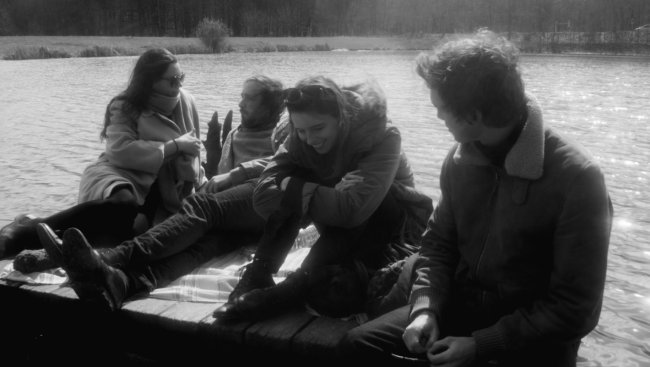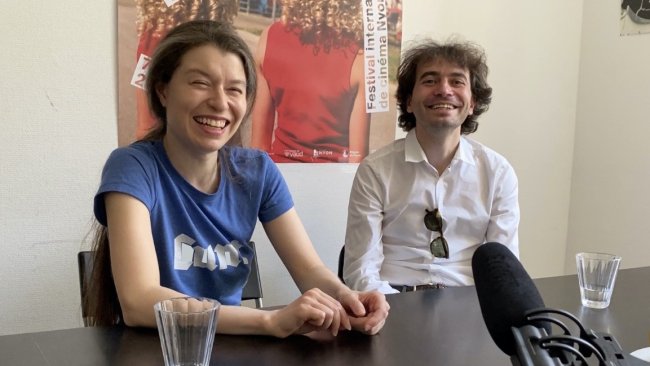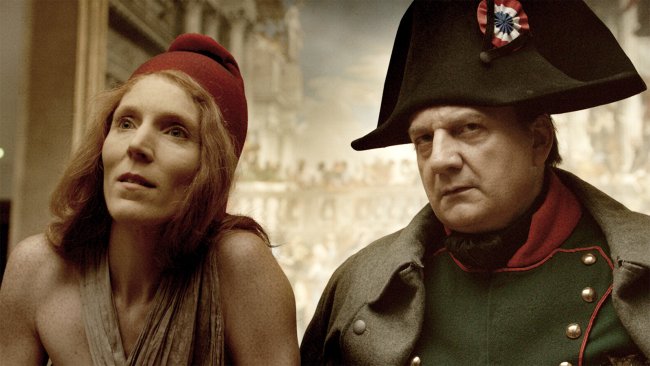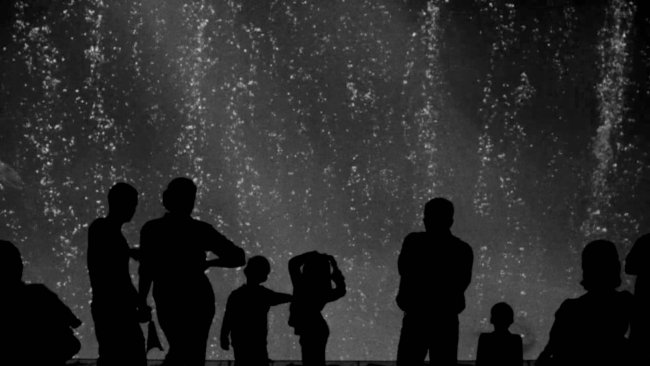Talking about Trees
[…] It is a magical, humorous moment that immediately clarifies the two main themes of this African documentary: the infinite love for the craft of filmmaking and the crucial importance of cinema for the country's cultural growth.
[…] On the whole, Gasmelbari’s work finds an expert balance between documenting a piece of the national history of film and following the group’s unsuccessful attempts to revive their country’s love of film.
Text: Davide Abbatescianni
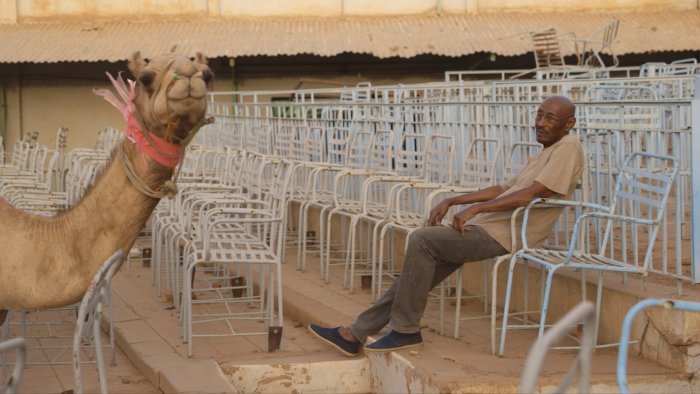
The story of Suhaib Gasmelbari’s Talking About Trees begins during one of the periodical blackouts that hit Khartoum, Sudan’s capital. In an abandoned building, a group of old retired filmmakers called “Sudanese Film Group” – namely, Ibrahim Shaddad, Manar Al Hilo, Suleiman Mohamed Ibrahim El Nour, Altayeb Mahdi – try to recreate a well-known scene from Billy Wilder’s masterpiece Sunset Boulevard. Director Al Hilo instructs Shaddad, who then wraps his head in a blue scarf and plays a few lines from Gloria Swanson’s Norma Desmond. It is a magical, humorous moment that immediately clarifies the two main themes of this African documentary: the infinite love for the craft of filmmaking and the crucial importance of cinema for the country's cultural growth.
Today’s Sudan is a troubled country controlled by Islamic fundamentalists and ranks very poorly in terms of press freedom (occupying the 175th spot out of 180 countries, according to the 2019 survey published by Reporters Without Borders), as a strict system of censorship is in place and freedom of expression is almost non-existent. In this context, the sudden death of the local film industry was inducted by the government in the late 1980’s and «was not natural at all», as pointed out by Shaddad during a radio interview. A significant part of the film is shot in darkness or in poor lightning conditions; this is mostly due to the shortage of electric supply but also somehow becomes a powerful metaphor for the current “dark age” of Sudanese cinema, and perhaps of the whole country, literally stuck in time and isolated by the international community.
Gradually, we become acquainted with the four directors’ previous works and study experiences abroad. Interestingly, this is not just done by simply showing excerpts of their student films or through the lead characters’ speeches, but also through their passionate searches for memorabilia such as old reels from the golden age of French cinema and block-notes filled by Shaddad during his university years at the German Film Institute. Many other important documents of Sudan’s film heritage went missing though; this is the case of one of El Nour’s student films, shot back in 1978. The man will desperately try to find it by ringing Moscow’s VGIK, but the call seems to bring no result. Overall, the Sudanese Film Group’s testimonies are rich in nostalgia, lost hopes and the teachings of their old masters.
Later on, we follow the four filmmakers hosting free screenings of classics like Charlie Chaplin’s Modern Times; they have limited means (just a laptop and a small projector) but their resilience and will power seem – despite their advanced age – to embody the revolutionary spirit distinctive of their younger years. “Revolution” is also the name of the cinema that they try to reopen in order to host a special screening of Quentin Tarantino’s Django Unchained. The wide shots showing the gigantic, empty theatre with improvised seats and the preparations for the movie night seem promising; nonetheless, bureaucracy and new stringent legal obligations will impede the event’s taking place. Next, the authorities reluctantly issue an official document stating that cinema closure is a political decision; this public admission is a sort of Pyrrhic victory for the Sudanese Film Group members, who are now forced to «get back to their lives». Throughout the film, Gasmelbari’s camera work is genuine and the filmmakers’ pain and misfortunes are plain to see on screen. Visuals depict reality with no sugar-coating, even through small details such as dusty roads, rusty chairs, old buildings with peeled-off paint and a cockroach running across the bathroom floor.
In the scene preceding the ending, we see El Nour falling asleep with the TV broadcasting propaganda bulletins in the background, followed by some footage from his (supposedly) lost student film Africa, Jungle, Drum and Revolution. It brings a hopeful vibe, reflected also in the picture’s last scene, showing Shaddad presenting Django Unchained to an imaginary crowd and then pointing his megaphone at the camera as if it would be a weapon, accompanied by the sound of a flurry of bullets. It is rewarding, evocative image, which reminds the viewers that all is probably not lost and that the film itself became a powerful tool to take a stance against oppression and authoritarianism.
On the whole, Gasmelbari’s work finds an expert balance between documenting a piece of the national history of film and following the group’s unsuccessful attempts to revive their country’s love of film. Although its cinematic style is predominantly contemplative, it would perhaps have benefited from a more finely tuned editing process (especially in terms of narrative pace). However, the final result is truly commendable. Even though the directors' attempts to revive the local film culture were unsuccessful and their call to action might remain unheard in their country, Gasmelbari’s documentary managed to put Sudan’s troubled state of cinema in the international spotlight.
This article contains a third-party video. If you would like to watch the video, please adjust your settings.
Watch
Screenings at Black Movie Geneva 2020 and in Swiss cinema theatres
Info
Talking About Trees | Film | Suhaib Gasmelbari | FR-SD-TD-DE-QA 2019 | 93’ | Black Movie Geneva 2020
First published: January 25, 2020
